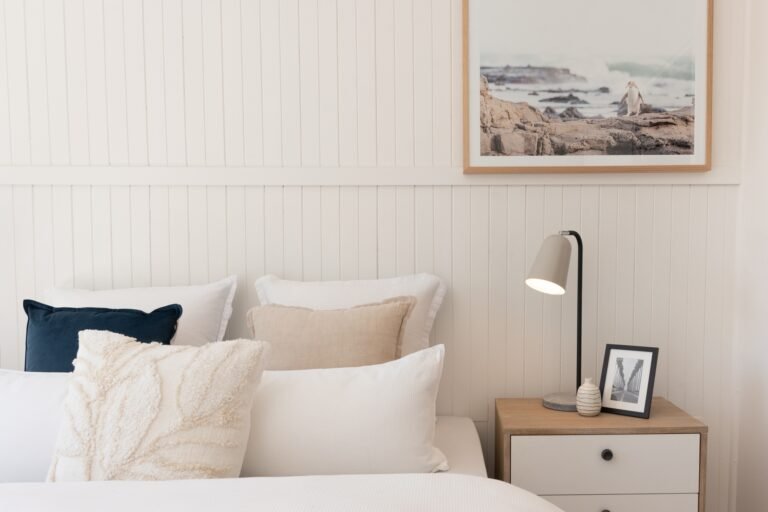You may be thinking, so what does actually make a bed sustainable? A sustainable bed isn’t just about what’s inside, it’s about how it’s made, who makes it, and whether you can sleep well at night (literally and figuratively!). Sustainable beds are typically made by renewable materials like organic cotton, hemp or wood – which are responsibly sources. Manufacturing beds in this way keeps waste and emissions as low as possible. By buying sustainable beds, you will get a sturdy and comfy product without feeling guilty about your environmental footprint.
It is also important to take into consideration ethics too. If a company has fair labour practices and a transparent supply chain it means no chance of work exploitation.
Brands such as Sleepeezee manage to combine eco-friendly values along with clever design. They are known for quality and innovation and really lean into British manufacturing. Sleepeezee beds are all about comfort, but also big on sustainability and social responsibility. On top of this, Sleepeezee are the first UK bed maker to be awarded a Planet Mark accreditation for climate action – and they hold a Royal Warrant.
We all know that comfort also plays a huge part when choosing the perfect bed. Sustainable does not mean that a bed has to be stiff or basic. Modern touches such as pocket springs and cooling gels can work alongside eco materials for a genuine restful sleep.
Key Principles of a Sustainable bed
The principles of a sustainable bed are balanced between ethical production, comfort and environmental responsibility. The perfect bed is built from carefully chosen materials, made under fair conditions and really importantly designed to last. Choose companies such as Sleepeeze that offer long warranties to ensure your investment lasts long.
Sustainable Materials
Look for materials that are sustainable – organic cotton, natural latex, FSC-certified or reclaimed wood. By using these types of materials you will skip the nasty chemicals and help keep resources intact for the long haul.
Keep an eye on certain certifications such as the following to make sure you are getting the product you want.
GOTS – the cotton is actually organic
OEKO-TEX Standard 100 – textiles are free from toxins
Made Safe – bedding is non-toxic and chemical free
Picking certified materials isn’t just a box-ticking exercise. It’s also about supporting ecological balance and making sure your sleep isn’t harming you, or the planet.
Ethical Sourcing
Sourcing a bed ethically is about taking the time to know who made your bed, and ensuring exploitation is not a factor. By looking for Fair Trade Certified products ensures that workers get fair pay and safe conditions. Plenty of sustainable beds use Fair Trade cotton and wood from properly checked sources. That is good for the planet and people.
British brands are particularly known for a reputation for quality craftsmanship and real innovation in sleep tech. Brands such as Sleepeeze show a commitment to British manufacturing. It’s not just about tradition, it’s about supporting local workers whilst keeping a close eye on standards. British manufacturing also has a genuine push for sustainability and social responsibility. If you want a bed that feels good and does good, British-made is a great choice.
Durability and Longevity
Look for bed options with long warranties to ensure long-term quality. The longer your bed lasts, the less waste and fewer resources go down the drain. Sustainable frames typically use materials such as solid FSC-certified wood or metal. These materials are made to last!
When looking at the longevity of a product, design is important to take into consideration too. Beds that are trending don’t tend to stick around for too long. Look for beds that aren’t chasing trends to purchase a timeless piece. Durable mattresses, such as those that are made from quality natural lates, tend to hold their shape and comfort better than other materials on the market.
Health and Non-Toxic Benefits
Let’s be real: nobody wants to sleep on chemicals. Look for organic cotton (GOTS), OEKO-TEX, or MADE SAFE certified mattresses to ensure no pesticides or toxic off-gassing.
Along with the bed frame and mattress, it’s also important to look at different types of bedding. Non-toxic bedding is a great option and helps with allergies and indoor air quality. Natural materials such as wool or latex can also be great for regulating temperature and fending off dust mites without chemical treatment. Prioritizing these options is essential if you want to avoid nasty surprises in your sleep environment.
Eco-Friendly Furniture
The rest of your bedroom also counts too. Choosing furniture pieces made from materials such as reclaimed wood and bamboo help to reduce your carbon footprint, reducing deforestation and adding to landfill. Along with having minimal impact on the environment, they also look great too.
Keep an eye out for furniture with low-VPC finishes and materials that meet sustainable forestry or recycling standards. If the furniture piece is also Fair Trade Certified, this is even better! It’s all about making choices that feel right, ethically, environmentally and for your own peace of mind.


































